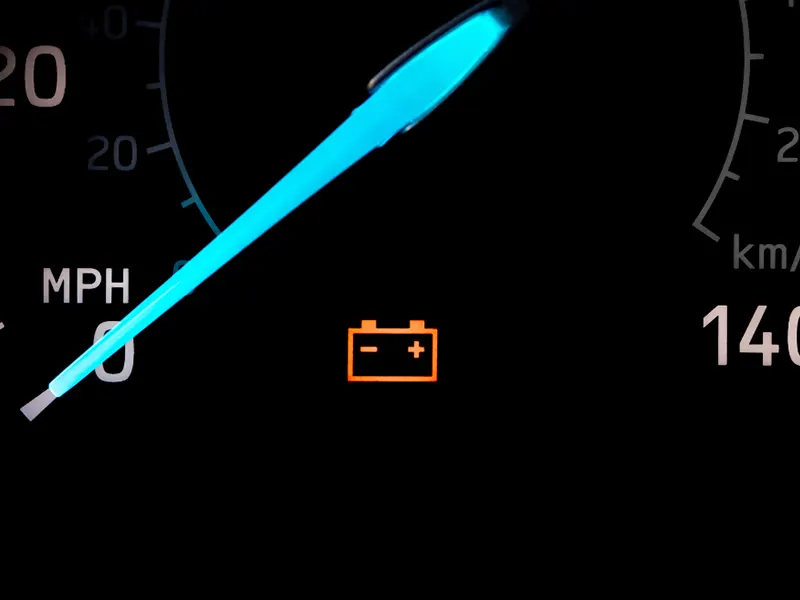Being stranded with a dead battery is an extremely inconvenient and potentially dangerous situation. Let’s explore the causes, solutions, and preventative measures.
Problem Identification
Waking up to discover your vehicle won’t start due to a low or dead battery is a huge inconvenience that could completely derail your day.
The inability to start a vehicle when the battery level drops below 12.4-12.6 volts is often caused by battery discharge from leaving interior lights on, making frequent short trips without fully recharging, extreme weather, aging, or loose connections causing increased resistance. Being prepared with backup options or preventative care is key to avoiding this headache.
Signs of a Low Battery
- Dashboard warnings like “Battery Low” or “Alternator Fault” directly indicate issues.
- Slow, labored cranking or whirring noises signal the starter lacks sufficient current. Healthy starting current exceeds 150 amps.
- Dim or flickering headlights, dashboard lights, or accessories point to inadequate power delivery impacted by the battery’s degraded state of charge.
- Clicking or buzzing from the ignition or starter relay when attempting to start hints at voltage too low for solenoid engagement.
Starting a Vehicle with a Low Battery
Fortunately, several options exist to start your vehicle even with a questionable battery level:
Jump Starting
Jumper cables connect good Samaritan vehicles to supply starting current. However, safety preparation helps prevent electrical danger or damage. Consider voltage differences, isolate metal jewelry, ensure proper connections – positive to positive and negative to grounded metal, not fuel lines. Maintain contact order when disconnecting. If unsuccessful after 30 seconds, let components cool to prevent permanent damage prior to the next attempt.
Push Start Manual Transmissions
By manually rolling the vehicle to 5+ mph in 2nd gear with the key on prior to releasing the clutch, the spinning motor reengages to start itself sans battery. This requires space to safely gain momentum plus an extra driver behind the wheel while pushing.
Allow the engine to fully turn over prior to operating the brakes or shifting gears. Exercise caution maintaining control during the start process.
Portable Jump Starters
These lithium-powered units ranging 500-2000 peak amp capacity easily store in your vehicle for self-jumping. Follow charging routines to ensure readiness. Clamp the designated leads onto the battery. For deeply discharged vehicles, wait several minutes prior to cranking. Avoid repeated long cranking cycles. Plusses include flexibility; limitations involve shorter duty cycles than direct vehicle jumps. Expect to pay $100-500+ based on durability and long term reliability.
Professional Roadside Assistance
All major auto clubs plus certain insurance plans offer 24/7 help including battery testing, replacement and jumps. Expect reasonable but not insignificant fees even with membership plans. Calling eliminates self-rescue hassles but involves wait times for aid arrival.
Preventative Measures
Routine maintenance dramatically reduces the chances of being caught off guard by dead batteries.
- Check voltage monthly. 10.5-12.6V readings indicate good charge. Below 10V triggers closer inspection for charging issues or deterioration.
- Clean corroded terminals with a wire brush twice annually. Soak heavily corroded sections in warm water and baking soda.
- Avoid relying solely on short trips under 15 minutes to recharge. Such outings fail to mitigate sulfation caused by chronic undercharging.
- When possible, disconnect or reduce usage of non-critical accessories like seat heaters. Systems compelling the alternator to constantly work extra hard accelerate wear.
- Rotate older batteries nearing 3 years of age, regardless of mileage. New replacements better withstand extreme temperature fluctuations.
Investing $100-200 in preventative tools like a portable jump box, multimeter and corrosion treatment spray helps avoid the nightmares of being stuck roadside or missing important events due to a pesky dead battery.
Alternative Solutions
Beyond roadside assistance already covered, other options like public transportation, ride shares or taxis offer inexpensive ways home when your vehicle won’t cooperate. Planning alternate routes prior to driving allows for quick adaptation if needed.
Maintaining AAA or similar services memberships helps reduce potential financial impacts when away from home without access to your personal jump starting equipment and familiarity of local options.
Stay vigilant against battery issues, but rest assured multiple effective remedies exist if your vehicle ever fails to start due to low voltage. With the right preparation, no stranded driver needs to panic even if their battery meter unexpectedly heads south.

John Smith, a Los Angeles-based car specialist and automotive writer, boasts over 20 years in the industry. With a background as a master technician and a decade-long writing stint at notable automotive publications, John now shares his expansive knowledge on CarFinite, simplifying car maintenance for readers.

